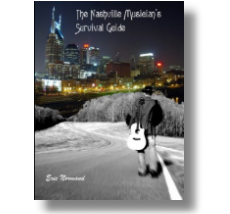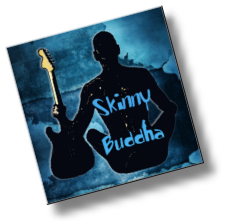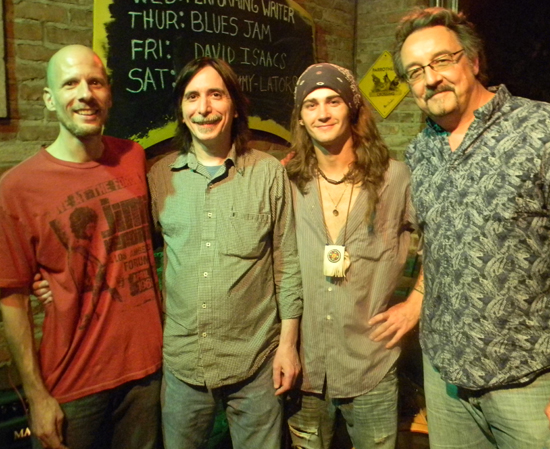
By Eric Normand
What an amazing run of shows we had with Rhett Akins and Dallas Davidson on the forth installment of the Luke Bryan Farm Tour! The sold out tour embarked on eight shows across the Deep South, with Rhett and Dallas performing acoustically on the first four, and me and the boys joining in for full band performances on the second leg. The weather for these events was picture perfect, the crowds were huge, and the shows an amazing encapsulation of kinetic energy!
Me and the rest of the band (Nick Forchione on drums and Tom Good on bass) converged at a bus yard in Nashville on Tuesday night and hopped on Luke’s band bus. You never know what to expect in these situations, (as the two bands began this run as total strangers) and we were pleased to learn that Luke’s band and crew are some of the nicest people you could ever hope to work with. Gracious hosts, they made us feel instantly at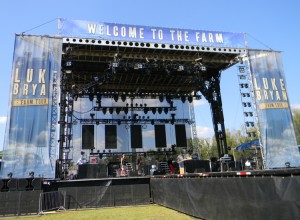 home.
home.
After a good night of sleep on a smooth riding Prevost I awoke in Villa Rica, Georgia. This first show was on a football field, and by the time I wandered over to catering around 10 AM the mobile stage was already up, the field buzzing with activity. Luke went all out on the production for this tour, and there were no less than eight buses accompanying the five semi’s full of staging, audio, lighting, video, and pyro it took to put on these mega-shows.
I was thrilled to find out that there were some other health-conscious folks in Luke’s entourage, and me and Nick joined several of Luke’s band-mates on a trip to the fitness facilities at the University of West Georgia. By 4 PM the stage crew was ready for our sound check, quickly dialing in our in-ear monitor mixes and a bigger than life sound through the mains of the million-dollar Claire Brothers sound system. As a guitar player, I’ve always struggled with in-ear mixes, lack of warmth and ambience being my main gripes, but on this lucky day I learned a new trick. Upon the suggestion of the Claire Brothers monitor engineer, we put a little reverb on my guitar in my ear mix, and this created some extra depth.
Later that night and after the first two openers, Chancie Neal, and Cole Swindell, we took the stage for the first full-band show with Rhett and Dallas. As members of the red-hot songwriting team known as “The Peach Pickers”, Rhett and Dallas have 13 number one songs and countless top 20 hits between them, including a few of Luke’s recent hits “Rain Is a Good Thing”, “Country Girl Shake It for Me”, and “I Don’t Want This Night to 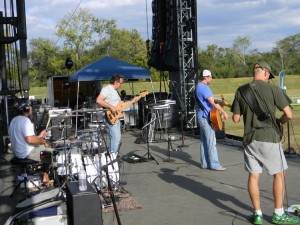 End”. This fact makes it pretty easy to create a blockbuster 45 minute set which included Blake Shelton’s “All about Tonight“ and “Honeybee”, Rodney Atkins’ “Farmer’s Daughter” and “Take a Back Road”, and the Trace Adkins chart topper “Honky Tonk Badonkadonk”, among others. At times the crowd was singing along at a volume that was as loud, if not louder than the band! The action-packed set went by at warp speed, and it seemed like no sooner than we had started we were walking off the stage.
End”. This fact makes it pretty easy to create a blockbuster 45 minute set which included Blake Shelton’s “All about Tonight“ and “Honeybee”, Rodney Atkins’ “Farmer’s Daughter” and “Take a Back Road”, and the Trace Adkins chart topper “Honky Tonk Badonkadonk”, among others. At times the crowd was singing along at a volume that was as loud, if not louder than the band! The action-packed set went by at warp speed, and it seemed like no sooner than we had started we were walking off the stage.
The stagehands helped us get our gear off the stage and by 9 PM our workday was done. A short workday is characteristic for an opening act on a major tour – you’re the last to sound check and the first to play. Now it was Miller time, or in this case “Coors time”, or for a few of us “Crown Royal time”! After a quick cocktail and a little chill time on the bus we went out to check out Luke’s show. The level of musicianship in Luke’s band is nothing short of exceptional, and their 90 minute set was a rocking good time with some stunning visual aspects as this night was a dress rehearsal for the following show which was being taped for a television special.
The following day I awoke and looked out the bus window to the view of an open, grassy field in Athens Georgia – this concert was actually taking place on a real farm! After a little morning chow I decided to take a jog down some of the surrounding roads of this picturesque farming community, Rhett’s song, “Take a Back Road” having some real relevance on this warm autumn day. The day evolved similarly to the previous and the ultra-professional crew did an outstanding job erecting this mega-production in less than ideal circumstances. I later learned that the 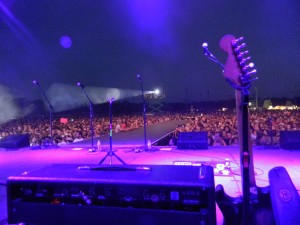 stagehands on this particular tour traveled from show to show (unlike many touring situations where stagehands are local to each venue) and this creates a continuity that helps the production run smoothly. The performances on this night went off without a hitch, with all of the bands delivering outstanding performances. Luke’s show was filled with special visual effects for the filming of the television production – including a laser show, pyro, and a massive finale of fireworks to end the night.
stagehands on this particular tour traveled from show to show (unlike many touring situations where stagehands are local to each venue) and this creates a continuity that helps the production run smoothly. The performances on this night went off without a hitch, with all of the bands delivering outstanding performances. Luke’s show was filled with special visual effects for the filming of the television production – including a laser show, pyro, and a massive finale of fireworks to end the night.
The next day would find us in Tallahassee, Florida and I joined up with some of the guys to go work out at the fitness facilities of Florida State University. After a great workout at a great facility we were ready to get back for some lunch, but not before winding up in a “runner altercation”. The runner informed us that he needed to stop at Lowe’s to get some stage pins for the production crew. Of course they didn’t have what he was looking for and sent us to another store that didn’t have it either. An hour and a half later we caught a lucky break at a John Deere tractor store and were finally heading back to the venue with the necessary part, and some growling stomachs. Another sold out show, another night of great performances and we were off to the tour’s grand finale in Macon, Georgia.
As Luke’s buses were returning to Nashville after this final show and we were going on to play one more show with Dallas and Rhett at the Georgia Throwdown in Dallas’ hometown of Albany, Georgia (a festival that Dallas helped organize), we had another bus arriving in Macon late morning. After the bus arrived we loaded our stuff onto it and continued about our day. As Macon is home of the final resting place of Duane Allman and Berry Oakley, a couple of us took the mile and a half walk to the Rose Hill Cemetery, a place from another world where a young Allman Brothers Band once played guitars, wrote songs, and partied into the hot Georgia nights.
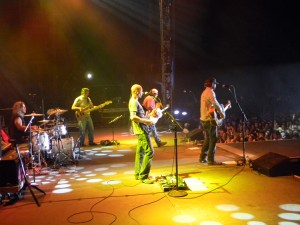 Later on we took the stage in front of 16,000 fans for a final, climactic performance on this epic tour. I’ve played countless big shows over my decade in Nashville, but on this particular night a special energy was present. The songs just seemed to play themselves and the crowd was singing every chorus (and many verses) at a near deafening volume. At one point I pulled out one of my in-ear monitors to really internalize the feeling of the moment. As a musician it’s almost otherworldly to hear and feel your guitar coming out of 100,000 watts or so of PA speakers, and to feel the interaction between artists, band and audience on a show at this level is truly amazing! Our band was really on and Rhett and Dallas were at the top of their game, putting on a dazzling show for what looked like a sea of humanity that stretched to the horizon.
Later on we took the stage in front of 16,000 fans for a final, climactic performance on this epic tour. I’ve played countless big shows over my decade in Nashville, but on this particular night a special energy was present. The songs just seemed to play themselves and the crowd was singing every chorus (and many verses) at a near deafening volume. At one point I pulled out one of my in-ear monitors to really internalize the feeling of the moment. As a musician it’s almost otherworldly to hear and feel your guitar coming out of 100,000 watts or so of PA speakers, and to feel the interaction between artists, band and audience on a show at this level is truly amazing! Our band was really on and Rhett and Dallas were at the top of their game, putting on a dazzling show for what looked like a sea of humanity that stretched to the horizon.
A little while later Luke and his boys played their final show of the Farm Tour, and their epic performances received over-the-top responses after each song. When the show ended all of the artists, musicians, and crew members gathered on the stage for a group photo of the entire entourage. I was sad to see this run end, but we left for Albany with the knowledge that we made a lot of people happy over the course of this week, and we had also made some great new friends! See you next year, Farm Tour!
To view a slideshow of some pics from the tour click here.
Guitarist, singer, songwriter, producer and session-musician, Jack Pearson shared some unique perspective about his musical journey with a room full of Berklee alumni and others from the Nashville music community last Tuesday. The Nashville Berklee Jam, held monthly at the Fillin’ Station in Kingston Springs, saw some new faces and old friends on this special night, and Jack’s decades of experience as a world-class musician provided a rare peek behind the curtain for all those in attendance.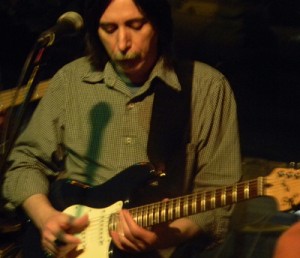
Jack’s musical career began in the mid 1970’s, when he played in multiple bands and logged his first recording session at age 16. In 1993 the Nashville native began his relationship with The Allman Brothers Band as a sub for Dickey Betts, eventually becoming a member of the ABB from 1997-1999 and also touring with Gregg Allman & Friends. Over the years he’s also worked with Vince Gill, Delbert McClinton, Jimmy Buffett, Earl Scruggs, Bobby “Blue” Bland, Amy Grant, Faith Hill, Gov’t Mule, Buddy DeFranco, and countless others.
Jack began his part of this night by playing some beautiful sketches of “I Can’t Get Started”, and for those who have never heard him play, his ability to transport an audience through time and space with nothing other than an unaccompanied electric guitar became quickly apparent. Following the spontaneous applause, Jack cut straight to some Q & A. One of the first questions asked was about his guitar, and I found it interesting that the deep, rich tone coming out of our backline Fender Deluxe originated from a Fender “Squire” Stratocaster, which he had recently bought for $100 at a pawn shop. Plugged into nothing other than a lone tube screamer, this drove home the point that great tone comes from within.
Learning from his oldest brother, Jack was exposed to rockabilly and blues as a teenager and explored the music of Chuck Berry, The Ventures, and Carl Perkins at a young age before eventually discovering jazz greats like, Wes Montgomery, Django Reinhardt, and Charlie Christian. Learning from friends, other musicians, and records, he slowly pieced together his musical vocabulary. He shared some thoughts on how to approach a II-V turnaround, demonstrating some different voicings and melodic approaches, underscoring the importance of putting song and melody above the technical understanding of modes and scales.
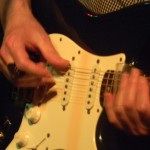 “It takes a lot of experimenting… a lot of guys come to me that get out of school and they say, “when I hear this chord I’m supposed to play this mode and scale”, and it locks them up. They can’t make any melodies because they’re told to play a mode or a scale.”
“It takes a lot of experimenting… a lot of guys come to me that get out of school and they say, “when I hear this chord I’m supposed to play this mode and scale”, and it locks them up. They can’t make any melodies because they’re told to play a mode or a scale.”
This simple, but prophetic thought resonated, and I had flashes to a time in my life when I over analyzed the music I played. Jack drove this point home with “…it comes down to the chord and the melody and where it’s going to…”
He went on to talk about the blending of styles and how he went through different periods of his life where he would be deeply immersed in a singular style for a few years – Delta blues, jazz, etc., and that after a while, all these different styles started coming together. Not afraid to take some chances musically, he demonstrated how he might go from a Howlin’ Wolf lick to a Charlie Parker lick within the same phrase, and that while some players will say this is wrong, he believes that “the main thing is to get the music out, and play with feeling.”
In response to a question about some of his best and worst gigs, Jack said that some of the worst gigs are when people don’t listen, and the music that you play with somebody is more important than the venue, or how famous somebody is.
He explained how learning all of the Allman Brothers songs as a kid helped put him in the position to sub for Dickey Betts on an early 90s Allman Brothers tour, which led to some recording with Gregg Allman and eventually to a phone call from Greg in which he was asked if he wanted to join the Allman Brothers band.
He candidly shared how this landmark gig damaged his hearing, causing an already existing case of Tinnitus to worsen, ultimately forcing him to leave the gig, perhaps sooner than he otherwise would have.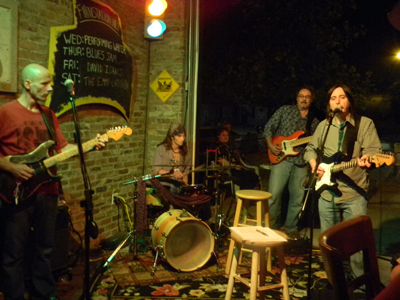
“There’s really no way to describe how loud it was on stage…Dickey Betts wasn’t in the PA…he was 135 dB side stage…”
As a fellow tinnitus sufferer I completely related to this portion of his talk and gained some new perspective as he explained that, despite wearing earplugs, extreme SPL’s (sound pressure levels) can still do damage, as the sound can affect your inner ear by entering your nose, mouth, and through your bones.
In response to a question about life lessons learned through music he answered, “Try not to take music for granted, it’s so special, and you can reach so many people…lyrics can encourage you, relate to your pain, but you can also do it with notes.” He demonstrated this by showing how the same group of notes can sound happy, or sad depending on where the emphasis is placed. He talked about the endless possibilities of how you can play even a single note, demonstrating this concept by playing a huge range of variances on a high “G” note.
After Jack’s talk concluded he played a short set with our Alumni House Band, the air becoming filled with the sounds of spontaneous applause after each inspired performance. Jack left shortly after his set, and the other alums in attendance continued jamming into the night. I, and everyone else in attendance would like to extend our appreciation and gratitude to Jack for sharing his music and journey on this special night!
Our next Nashville Berklee Jam will feature country music artist and hit-songwriter, Rhett Akins on Tuesday, September 11 at The Fillin’ Station. For more info, go to www.nashvilleberkleejam.com.
Some of my earliest childhood memories are of my dad playing records and, dare I say, reel to reel tapes of the music of Paul Butterfield, John Lee Hooker, Santana, and Derek and the Dominoes. I guess this music made an impression, because by my early teens in the early 1980’s I was buying my own records, not of the pop-based FM radio music of my generation, but of the previous generations more blues-based artists. While everyone else was listening to E.L.O. and Michael Jackson, I was discovering Jimi Hendrix, the Allman Brothers, BB King and Bobby Bland. Sure, I liked some of the 80’s guitar rock of the day, but always kept digging back to a more rootsy sound. Then right smack in the middle of 80’s hair band mania came Stevie Ray Vaughan, and I immediately related to his music.
Stevie’s music influenced a generation of guitarists and, at a moment where rock and pop music was winding itself up, almost single-handedly brought blues music back into the light. You couldn’t go see a club band during the late 80’s and early 90’s without hearing his music. I found myself covering his renditions of blues classics like “The Sky Is Cryin’”, “Empty Arms”, as well as originals like “Cold Shot” and “Walkin’ the Tightrope”, as did many others at that time. Stevie’s instrumental “Riviera Paradise” from the album ‘In Step’ is a beautiful piece of American roots music, and I always loved the spooky vibe created by his magical band on that song in particular.
I’ll never forget the day I heard of his tragic passing, how sad it was that we had to lose such a wonderful artist at such a young age. But his music, and the influence of his music, lives on, and I, like many others, will always appreciate everything Stevie did for music, and everything his music has done for the world.
So that’s why when I began hosting the Nashville Berklee Jam I felt compelled to  have Reese Wynans, the keyboardist who played with Stevie for the last five years of the great guitarist’s life, as a special guest speaker/performer. Reese was kind enough to share his story with me and a room full of alums at our monthly Nashville Berklee Jam last Tuesday at The Fillin’ Station.
have Reese Wynans, the keyboardist who played with Stevie for the last five years of the great guitarist’s life, as a special guest speaker/performer. Reese was kind enough to share his story with me and a room full of alums at our monthly Nashville Berklee Jam last Tuesday at The Fillin’ Station.
Almost 20 years before he began working with SRV he was playing in cover bands in his home state of Florida, and he recounted one of his first bands playing five sets a night, six nights a week. Two of the other members were Dickey Betts and Berry Oakley and on their one day off they would play a weekly free jam, adding Duane Allman and Butch Trucks to the mix. Eventually Duane decided to start his own band and stole these key members to form The Allman Brothers.
After spending a few years in San Francisco and working with a still-unknown artist at this time, Boz Scaggs, he returned to Florida for a brief period and then worked the East Coast in a show band for a few years. Reese then migrated to Austin, Texas, a booming town full of blues-infused music by this point of the mid-70s. Of this time, Reese spoke passionately.
“It was really great for me living in Austin…everything was so rootsy…they had a great music scene back there in the 70’s. They had a great blues scene, and a great blues club called ‘Antone’s’…and I would go and sit in at Antone’s anytime I had a chance. I was ending up really lovin’ the blues during this time.”
By 1980 he found himself working for Delbert McClinton, playing on four of his records and touring extensively for the next five years. By 1985, Reese was ready to get off the road, and would have if not for a fateful encounter at the end of his final gig with Delbert. Apparently, Delbert’s sax player had been invited to play on one song of a Stevie Ray Vaughan recording session after Delbert’s concert, and at the last minute Reese was asked to join in as the other keyboardist did not show up. Things went very well at this particular recording session, one which produced the hit, “Look at Little Sister” and Reese was asked to come back and record the following day. By the end of that recording session he was asked if he wanted to join the band. Reese summed up a life lesson from this critical moment,
“When a door opens for you, you’ve got to be willing to walk through it, and then be able to deliver once you get through there.”
The next five years would yield three Grammys, several world tours, and a reintroduction of the blues to the masses –
“We were spokesman for Texas blues…as much as Stevie didn’t want to, BB King had to open for us, because we were just more popular than him. He said “no we can never, BB’s always closing the show”… but finally, we had to headline…I loved playing in that band…we were all totally immersed in the blues, and we felt like were the vanguard of the blues. We were dragging Buddy Guy and Otis Rush into the light and presenting them out on our shows to people who were just hungry for that music…the stuff that we played I thought was shining a light on all the huge blues guitar players that had come before us, and that was a wonderful thing to do, I felt like it was really worthwhile.”
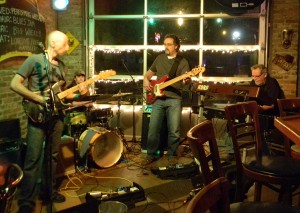 After Stevie’s tragic passing, Reese wound up in Nashville, TN, a place where he has continued to record and perform on a national level. During the talk, Reese passed around his All Music Discography, which reveals a staggering body of work, including Brooks and Dunn’s 2006 single of the year “Believe”. He offered us some thoughts about the differences between studio and live performance –
After Stevie’s tragic passing, Reese wound up in Nashville, TN, a place where he has continued to record and perform on a national level. During the talk, Reese passed around his All Music Discography, which reveals a staggering body of work, including Brooks and Dunn’s 2006 single of the year “Believe”. He offered us some thoughts about the differences between studio and live performance –
“I like being in the studio, I like playing gigs, I like playing clubs…all you people who do studio work know it’s two different things. Playing a club is really a chance to experiment…a chance to reach out in different directions and really find yourself. The studio isn’t really a place for that. The studio is where you don’t have to play it safe, but you’ve got to do something that’s exactly right for the 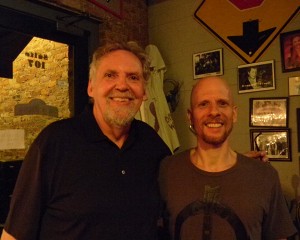 song…it’s a place for finding something that works, finding something unique that works.”
song…it’s a place for finding something that works, finding something unique that works.”
After his talk was finished, Reese was gracious enough to perform a set with our house band – a performance that was nothing short of inspired. I’ve heard his playing on many records, but there’s something intangible that you can feel in the heat of live performance that goes beyond a recording, and that was evident on this night. One of the songs we played together was “Little Wing”, a song that he had played on tour with Stevie, back in the day. On this song, Reese seemed to really stretch out in one of those magical musical moments in which time seems to stand still (see video below).
Eventually, this special night had to end, and we said goodbye after a quick photo op. Thanks, Reese, for sharing your wisdom, and for continuing to shine some light on that crown jewel of American music we call the blues.
